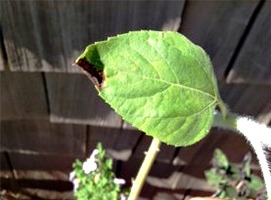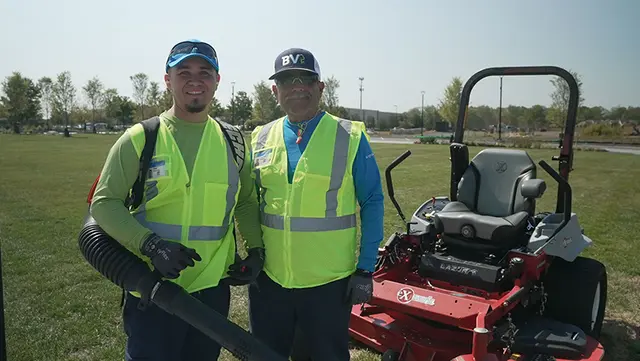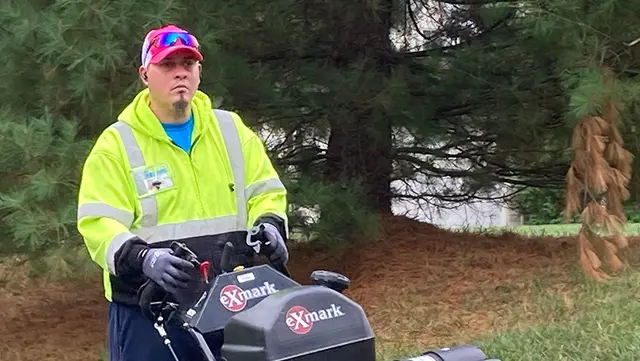4 Signs You are Overwatering Your Plants
Did you know that in many instances, too much water in your landscape can mimic the signs of too little water?
Overwatering your plants is a surprisingly common issue and a few small adjustments can help you improve your landscape. Once identified, overwatered plants can still be rescued and thrive in your landscape. To help you, we created a list of four signs to recognize when determining if there is too much water in your landscape.

The tip of this plant's leaf is brown, but it feels soft and limp due to overwatering. Roots are Critical to Plant Life
Roots are the primary source for your plants water, food, and intake of oxygen. While the roots of a plant take up water, they also need air to breathe. Overwatering, in simple terms, drowns your plant. Healthy soil allows for oxygen to exist in the space between particles of soil. If there is too much water or the soil is constantly wet, there is not enough air pockets. This results in a limited oxygen supply and plants are not able to breathe.-
Leaves Turn Brown and Wilt
When plants have too little water, leaves turn brown and wilt. This also occurs when plants have too much water. The biggest difference between the two is that too little water will result in your plant's leaves feeling dry and crispy to the touch while too much water results in soft and limp leaves. -
Water Pressure Begins to Build
Water pressure begins to build in the cells of plant leaves when the roots absorb more water than they can use. Cells will eventually die and burst, forming blisters and areas that look like lesions. Once these blisters erupt, tan, brown, or white wart-like growths begin to form in their place. You will also notice indentations forming directly above the growths on the top sides of the leaves. -
Stunted Slow Growth
Stunted slow growth accompanied by yellowing leaves is also a symptom. Leaves falling off often accompanies this symptom. If your plants have yellowing leaves and old leaves, as well as new leaves that are falling at the same accelerated rate, you are overwatering.
Check your soil regularly. Don’t be afraid to push your finger about an inch or two down in to the soil to check the moisture. If the soil feels moist and you observe some of the signs above, it’s an excellent indication that you need to reduce your watering. Many stores also sell accurate moisture meters. Simply insert them in the root ball and it will tell you how much water is in the soil. This simple, inexpensive tool can take much of the guess work out of watering your landscape.
Great Service, Beautiful Landscapes
Benefit from a comprehensive landscape maintenance plan designed to meet your needs and exceed your expectations, all delivered by a team invested in your success.



